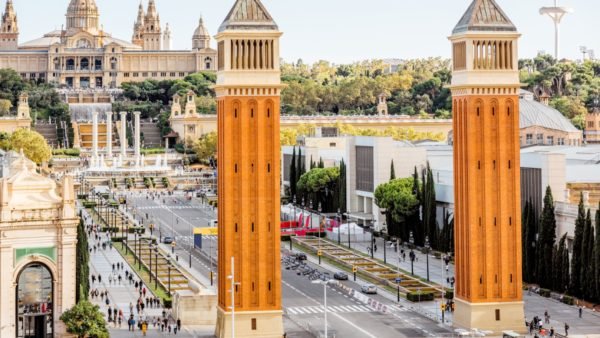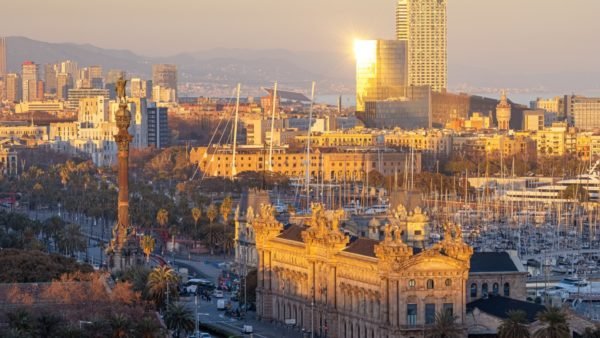From bustling metropolises to charming countryside villages, getting around Spain with kids is an integral part of your journey. Here are the various modes of transportation available, helping you navigate Spain with ease and confidence.
Public Transportation
1. Trains
Spain boasts an extensive and efficient rail network, making trains one of the most popular ways to travel between cities. Renfe is the national train operator, offering high-speed AVE trains between major destinations like Madrid, Barcelona, Seville, and Valencia. The train system provides a comfortable and scenic way to experience the country’s landscapes.
2. Metro and Tram
Major cities like Madrid, Barcelona, Valencia, and Seville have well-developed metro and tram systems. These systems offer a convenient and affordable way to explore the city’s attractions, avoiding traffic congestion and parking hassles.
3. Buses
Spain’s bus network is comprehensive, connecting even remote towns and villages. Long-distance buses, operated by companies like ALSA, provide a budget-friendly option for traveling between cities and regions. Urban buses are a great way to navigate within cities, providing access to areas not covered by metro or tram lines.
4. Taxis and Ride-Sharing
Taxis are readily available in cities and can be hailed on the street or booked in advance. Ride-sharing services like Uber and Cabify are also available in major urban centers.
Inter-City Travel
1. Domestic Flights
For longer distances, domestic flights can be a time-saving option. Major airports like Madrid-Barajas Adolfo Suárez Airport and Barcelona-El Prat Airport connect Spain’s cities and offer international connections as well.
2. Car Rentals
Renting a car gives you the flexibility to explore off-the-beaten-path destinations and rural areas. While driving in cities can be challenging due to traffic and parking limitations, a rental car is invaluable for exploring the countryside and small towns.
3. Highways and Toll Roads
Spain has an extensive network of well-maintained highways (autovías) and toll roads (autopistas). Toll roads are generally faster and offer better quality, but they come with a cost. Make sure to factor toll expenses into your travel budget.
Exploring Local Areas
1. Walking and Biking
Many Spanish cities are pedestrian-friendly, and walking is an excellent way to soak in the local atmosphere. Some cities also offer bike-sharing programs, providing a green and efficient way to explore.
2. Ferries and Boats
In coastal areas and the Balearic Islands, ferries and boats are common modes of transportation. Ferries connect mainland Spain with the Balearic and Canary Islands, providing a scenic journey.
Rural and Remote Areas
1. Regional Buses
When venturing into rural or remote areas, regional buses are a valuable option. They connect towns not served by trains and offer a glimpse into the local way of life.
2. Guided Tours
In areas with limited public transportation, guided tours can provide hassle-free exploration. From wine tours in La Rioja to hiking in the Pyrenees, guided tours offer expert insights and organized transportation.
Useful Tips for Getting Around
- Language: While many Spaniards speak English, especially in tourist areas, knowing a few basic phrases in Spanish can be helpful, especially in remote locations.
- Tickets and Timetables: Research ticket options, schedules, and any special offers for public transportation in advance. Check for discounts on train tickets when booking early.
- Metro and Bus Cards: Many cities offer reloadable cards that can be used on metro, tram, and bus services. These cards often provide savings compared to buying individual tickets.
- Peak Hours: Be mindful of rush hours when using public transportation in cities. Trains and metros can get crowded during morning and evening commutes.
- Parking: If you’re renting a car, research parking options in advance, as parking in city centers can be limited and expensive.
- Navigation Apps: Use navigation apps like Google Maps or local apps to plan routes, check schedules, and find transportation options.
Getting around Spain is a diverse and rewarding experience, offering travelers a range of transportation options to suit their preferences and itineraries. From the high-speed AVE trains connecting major cities to the leisurely exploration of rural areas by regional buses, Spain’s transportation network ensures easy access to its most iconic attractions and hidden gems. Plan your journey wisely, and you’ll navigate Spain’s diverse landscapes and rich culture with convenience and enjoyment.




